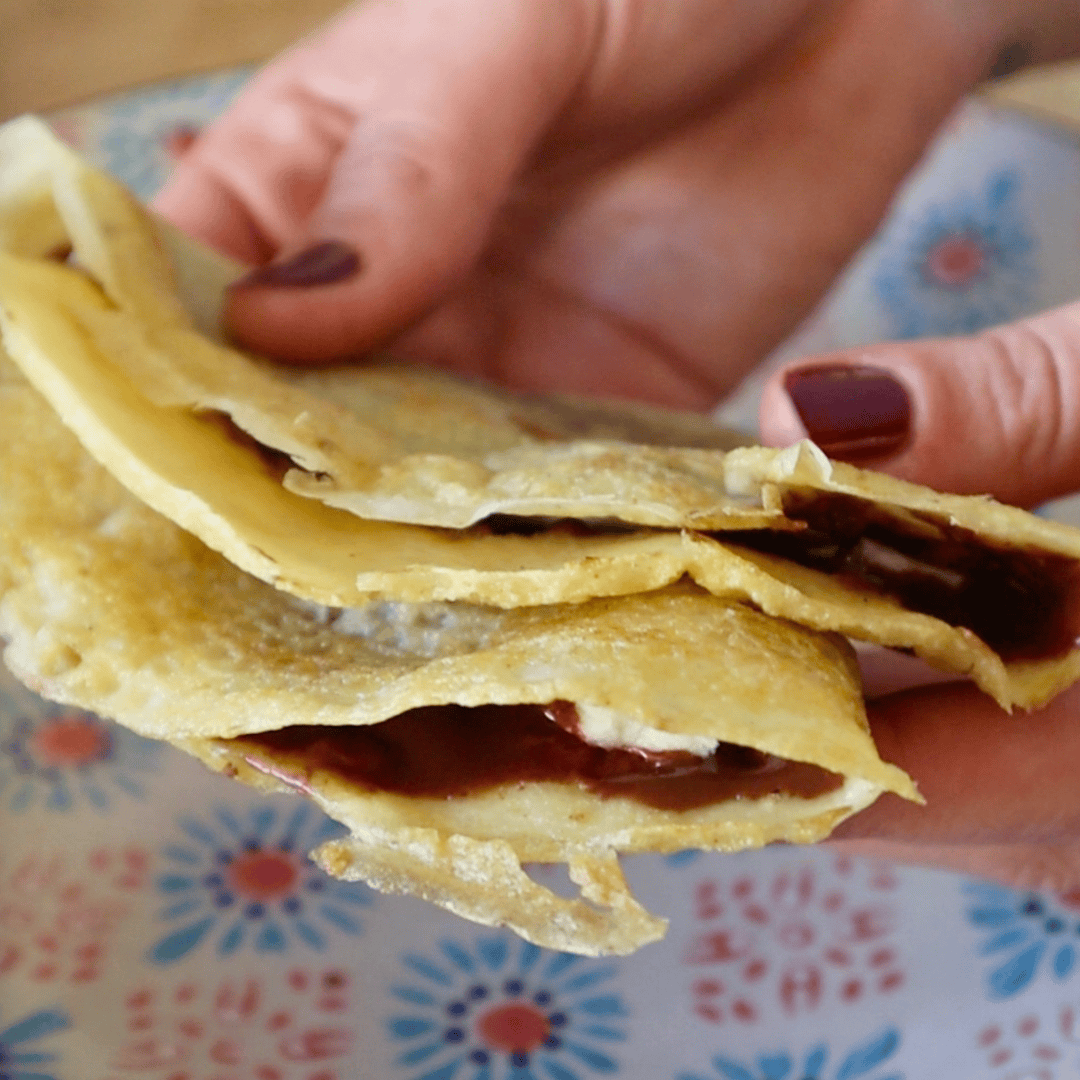Looking for a potato starch substitute? Whether you ran out of it or you can’t find it, you’re in the right place! Here you will find the 10 top potato starch substitutes.
Due to its capacity to give sauces and fillings a light, transparent, and glossy finish, potato starch is a versatile thickening ingredient that is frequently used in baking and cooking.
To get comparable texture and consistency in your recipes when potato starch is unavailable or you need to find a replacement for dietary reasons, you need to find acceptable substitutions.

What is Potato Starch?
Potato starch is the starch extracted from potatoes, dried into a fine powder. To make it, potatoes are crushed to extract the starch grains, that are then dried and made into a powder.
Potato starch is not the same as potato flour, as potato flour has flavour, protein and fibre while potato starch is just the starch.
It’s a very versatile ingredient used in baking and cooking for its ability to bind, thicken and add moisture to dishes. It’s very popular in gluten-free baking and is known for its neutral taste and high binding strength.
It can be added to almost any dish, from sauces, stew, gravies, soups and more. It’s works particularly great to thicken soups and sauces.
However, there are times when you might need a substitute due to dietary restrictions, availability, or personal preference.

What is potato starch used for?
Thickening: The main purpose of potato starch is to thicken foods like soups, puddings, stews, and sauces.
Coating: Potato starch works well as a covering for fried ingredients.
Binding: It’s used a lot in baking, as a binding agent. It helps keep all the ingredients together as well as enhancing the texture of baked goods.
Potato Starch Substitues Summary:
- Cornflour/Cornstarch
- Tapioca Starch
- Arrowroot Powder or Arrowroot Starch
- Rice Flour
- Wheat Flour or all purpose flour
- Coconut Flour
- Xanthan gum
- Guar Gum
- Psyllium Husk
- Flaxseeds
10 Top Potato Starch Substitutes And How To Use Them
Corn flour – Cornstarch

The most popular alternative to potato starch is probably cornflour, also called cornstarch. It is widely available in most kitchens and has comparable thickening qualities.
Cornflour is a great addition to baked foods, sauces, gravies, and soups. To prevent lumps, mix it with a little cold water before adding it to heated liquids. It provides a similar glossy and translucent appearance.
Nevertheless, mixes made with cornflour may become slightly more opaque than those made with potato starch, and different amounts may be needed to achieve the same degree of thickening.
For thickening, You need less cornflour compared to potato starch to have the same thickening result. Start with half and add accordingly.
Potato starch is usually added at the end of cooking, cornflour can hold up well for longer periods and it should also be cooked out because it has a floury flavour. It should not although be cooked at high temperatures.
For deep frying, cornflour gives a crunchier result than potato starch.
Best for: Soups, Sauces, Gravies
Tapioca Starch/Flour

The next best alternative to potato starch is tapioca starch, a fine, white powder made from the cassava root, which is gluten free and neutral in flavour. Tapioca starch is also called tapioca flour.
It works great in baked goods, fruit pies, and Asian desserts that call for a springy quality. Compared to cornflour, tapioca starch thickens at a lower temperature, giving it a chewy, glossy texture.
You can use a 1:1 ratio for thickening sauces and soups.
Best for: Puddings, Sauces, Gluten-free baking
Arrowroot Powder or Arrowroot Starch

Potato starch can also be replaced with arrowroot powder, a fine-textured, gluten-free starch that is extracted from the maranta arundinacea plant. It works well in glazes, sauces, and pie fillings. Because it does not easily break down, it is perfect for foods that need to be frozen or reheated.
While arrowroot powder thickens at a lower temperature and imparts a similar glossy finish, it may require a bigger quantity than potato starch. However, too much of it can lead to a thick and gloopy texture.
Use a 1:2 ratio. For every tablespoon of potato starch, use 2 tablespoons of arrowroot powder.
Best for: Clear sauces, Glazes, Jams and jellies
Rice Flour

You can use rice flour as an alternative to potato starch. It comes in two varieties, white or brown and it’s a great replacement as a thickening agent.
It’s especially helpful with gluten free baking and when coating foods before frying. Although, rice flour can have a little grainy texture, therefore for a smoother consistency, it works best when combined with other flours.
You can use a 1:1 ratio Replace one cup of rice flour with one cup of potato starch.
Best for: Gluten-free baking, Coating for frying
Wheat Flour or all purpose flour

Wheat flour or all purpose flour is a common ingredient in most kitchens, and it can be used in place of potato starch as a thickening agent.
It has a creamier texture and needs to be cooked longer to prevent tasting like raw flour, and it is not gluten-free.
It’s a versatile ingredient. It works well for baking, frying, and thickening. Since the natural binding and thickening qualities of wheat flour are similar to those of potato starch, we think it’s a fantastic substitute. It works particularly well when preparing roux and thickening sauces and gravies.
You can use a 1:2 ratio when substituting it for potato starch
Best for: Baking, Thickening soups and sauces
Coconut Flour

Coconut flour is another gluten-free and grain free option to replace potato starch with a distinctive flavor. It’s made from dried coconut flesh and it also provides fibre, protein and other nutrients.
Similarly to potato starch, it absorbs moisture, which makes it a great thinking agent for soups and sauce.
Although, you may need to add more liquid in your recipe because it tends to absorb more liquid compared to potato starch.
Coconut flour, unlike potato starch, has a taste, of coconut of course and it slightly sweet. Therefore it is best suited for baking and desserts.
Start with a 1:0.8 substitution and add extra liquid as needed.
Best for: Baking, Desserts
Xanthan gum

Xanthan gum is another great substitute for potato starch. You might not have this in your kitchen, but it’s good to know that it can act as a great thickening agent.
It’s made from fermented sugars and it works well to thicken soups, dressings, and sauces. It is also a popular choice in gluten free baking as it provides structure and elasticity to doughs and batters.
Because of its strength, very little is required to get the correct thickness, and using too much might result in a slimy texture.
1/4 teaspoon of xanthan gum can replace 2 tablespoons of potato starch. It’s important to mix xanthan gum with dry ingredients first or dissolve it in a small amount of liquid to prevent clumping.
Best for: Gluten-free baking, Thickening sauces and soups, Emulsifying dressings and sauces
Guar Gum

Like xanthan gum, guar gum is a gluten-free thickening agent and it’s made from guar beans. It performs well in cold applications, such as puddings and ice creams.
Similar to xanthan gum, guar gum offers a smooth texture, although it should be used sparingly to prevent a sticky consistency.
Generally, 1/2 teaspoon of guar gum can replace 2 tablespoons of potato starch. It’s best to mix guar gum with other dry ingredients before adding liquids to prevent clumping.
Best for: Gluten-free baking, Thickening soups and sauces, Stabilizing ice creams and dairy products
Psyllium Husk

Psyllium husk is a fiber-rich substitute that can mimic the binding properties of potato starch. It’s often used in gluten-free and low-carb baking.
Start with a psyllium husk in a 1:1 ratio, but keep in mind that it absorbs a lot of liquid, so adjust your recipe accordingly.
Best for: Gluten-free baking Thickening soups and sauces
Flaxseeds

Flaxseeds can be used as a substitute for potato starch in certain applications, primarily as a binder rather than a thickener.
Ground flaxseeds, when mixed with water, create a gel-like substance that can mimic the binding properties of potato starch in recipes such as vegan baking, where eggs are typically used as binders.
This makes flaxseeds a suitable alternative in recipes like muffins, pancakes, and some types of bread where the goal is to hold ingredients together.
For thickening purposes in sauces or soups, other substitutes like cornstarch, tapioca starch, or arrowroot powder would be more appropriate due to their thickening properties when heated.
Best for: Baking
How to use potato starch substitutes
Finding the right substitute for potato starch depends on the specific needs of your recipe, whether it’s for thickening, binding, or adding texture.
You need to take into account the dietary requirements and specifications of the recipe when selecting the right replacement.
Because of its great thickening power and neutral taste, cornflour is a versatile ingredient that works well in both savoury and sweet foods.
It is particularly useful for thickening sauces and gravies. With its chewy texture, tapioca starch is perfect for baking without gluten and for thickening soups and sauces.
Arrowroot powder gives transparent sauces and glazes a glossy, non-cloudy finish that is ideal. Rice flour works great as a coating for frying and in gluten-free baking, but for smoother results, it might need to be blended with other flours.
All-purpose flour is not appropriate for gluten-free diets, but it does function well as a general thickener.
Because of its strong absorbency, coconut flour has a unique flavour and texture that work well in baking and dessert recipes.
Psyllium husk is a high-fiber substitute for gluten-free baking and thickening, while ground flaxseeds have a nutty taste and nutritional advantages, making them perfect for use as a binder and in baking.
Both guar gum and xanthan gum are effective substitutes for gluten in baking and as stabilisers in sauces and soups; guar gum adds stability and improves texture, while xanthan gum excels at binding.
Final Thoughts
Each of these alternatives brings unique properties to the table, so experimenting with them can lead to delightful culinary discoveries. Whether you’re looking for a gluten-free option, a low-carb alternative, or just something you already have in your pantry, these substitutes can help you achieve the desired results in your cooking or baking.










[…] Potato Starch Substitutes […]
[…] recipesandplaces ((↩)) […]